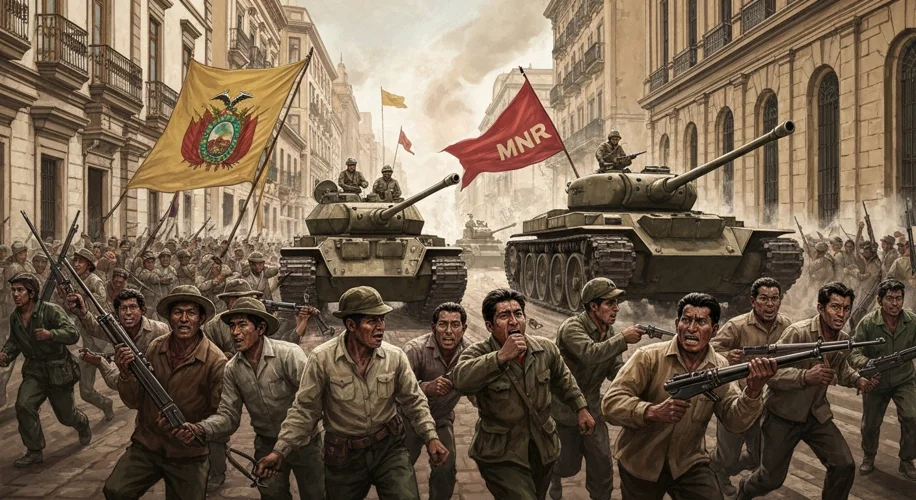The Dawn of a New Era
On April 9, 1952, the streets of La Paz, Bolivia, awoke not to the usual bustle of commerce, but to the rumble of tanks and the impassioned cries of a nation demanding change. This was the start of the Bolivian National Revolution, a seismic upheaval that would irrevocably alter the course of this Andean nation. At its heart was the Nationalist Revolutionary Movement (MNR), a political force fueled by the dreams of a more equitable Bolivia, a nation free from the shackles of entrenched inequality and foreign exploitation.
For decades, Bolivia had been a land of stark contrasts. A wealthy elite, often tied to the tin mining industry, held the reins of power, while the vast majority of the population, predominantly indigenous, lived in poverty, their ancestral lands often controlled by powerful landowners. The very earth that sustained them seemed to belong to others, and their voices were largely unheard in the halls of government. This simmering discontent, a slow burn of injustice, was about to ignite.
The Architects of Change
The MNR, led by Víctor Paz Estenssoro, was a diverse coalition. It drew strength from the urban middle class, intellectuals, and, crucially, the disenfranchised rural and mining communities. Their opponents were the traditional oligarchy and the military establishment, who saw the MNR’s agenda as a direct threat to their power and privilege. The key actors in this drama were not just politicians, but the ordinary Bolivians who took to the streets, workers who downed their tools, and peasants who organized to reclaim their heritage.

The Revolution Unfolds
The revolution wasn’t a single, swift blow, but a series of critical events. It began with the MNR’s electoral victory in the May 1951 election, which was subsequently annulled by the ruling military junta. This act of defiance galvanized the opposition. The MNR, along with allied parties, organized a general strike and armed rebellion. The ensuing clashes saw ordinary citizens, armed with little more than courage and determination, confront a seemingly more formidable military. The turning point came when defecting army units, sympathetic to the revolutionary cause, joined the uprising. Within days, the MNR had seized control of the capital, forcing the resignation of the junta and ushering in a new era.
Pillars of the New Bolivia
Once in power, the MNR wasted no time in implementing its ambitious agenda. The revolution’s impact was profound and far-reaching:
- Agrarian Reform: In August 1953, the government enacted a sweeping agrarian reform law. This broke up large estates and redistributed land to landless peasants, fundamentally altering the rural social structure and empowering indigenous communities.
- Nationalization of Mines: The MNR nationalized the country’s vast tin mines, which had been dominated by a few powerful families. This measure aimed to bring Bolivia’s key resource under national control and ensure that its wealth benefited the nation as a whole, not just a select few.
- Universal Suffrage: The revolution abolished the literacy and property requirements for voting, granting suffrage to all adult citizens, including indigenous people and women. This was a monumental step towards democratic inclusion and representation.
- Education Reform: Efforts were made to improve and expand access to education, particularly in rural areas, recognizing education as a vital tool for national development and social mobility.
A Legacy of Transformation
The Bolivian National Revolution of 1952 was more than just a change of government; it was a fundamental reordering of Bolivian society. It dismantled a centuries-old feudal system, challenged foreign economic dominance, and brought millions of previously marginalized citizens into the political fold. The MNR’s reforms laid the groundwork for a more inclusive and self-determined Bolivia.
However, the revolution was not without its complexities and challenges. The implementation of reforms was often fraught with difficulties, and the political landscape remained volatile. Yet, the spirit of 1952 endured, a testament to the power of popular will in shaping a nation’s destiny. It remains a pivotal moment, a bold declaration by the Bolivian people that they would forge their own future, built on the foundations of equality, justice, and national sovereignty. The echoes of their struggle continue to resonate, a powerful reminder of what can be achieved when a people unite for change.

